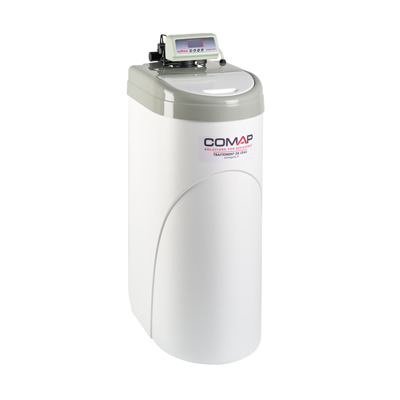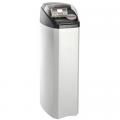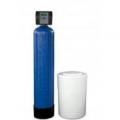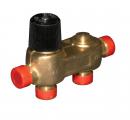Water softeners

Softening means reducing the TH (hydrotimetric ratio) of the water. This operation is usually carried out using a water softener. When installed on a cold water pipe, these appliances modify the physical and chemical composition of the water, by reducing the concentration of calcium and magnesium, which cause scaling.
How do water softeners work?
The water flows through ion exchanging resins that transform the calcium and/or magnesium into sodium. After leaving the appliance, the water is no longer hard (scaling), and has become "soft". The purpose of water softeners is to provide maximum protection against the scaling of pipes and other appliances. As the water flows through, the resins become saturated in calcium and magnesium. The resins then have to be regenerated, to be recharged with sodium ions, using a sodium chloride solution or brine (salt + water), that the water softener takes from the salt compartment. Regeneration is activated automatically, during the night, by an automatic system installed in the water softener head, and may be activated in two modes:
volumetric mode: by monitoring the volumes consumed
chronometric mode: by monitoring elapsed time
What are their applications?
Water softeners may be installed in both private and collective housing buildings, and also in industrial settings. There are different types of model:
- Simplex: one resin cylinder and one control valve
- Twin: two resin cylinders controlled by one control valve*
- Duplex: two resin cylinders controlled by two valves*
Glossary:
- ion exchanging resins: resin beads specific to water treatment that stimulate ion exchange (e.g. one calcium ion is exchanged for one sodium ion)
- sodium chloride = salt
- brine = a solution of water saturated with salt
*These models provide permanently available softened water.
Water softeners are usually installed on the main incoming water supply point, to ensure that the entire system is protected. However, they have to meet specific standards concerning public buildings, in which only sanitary hot water systems may be treated.





